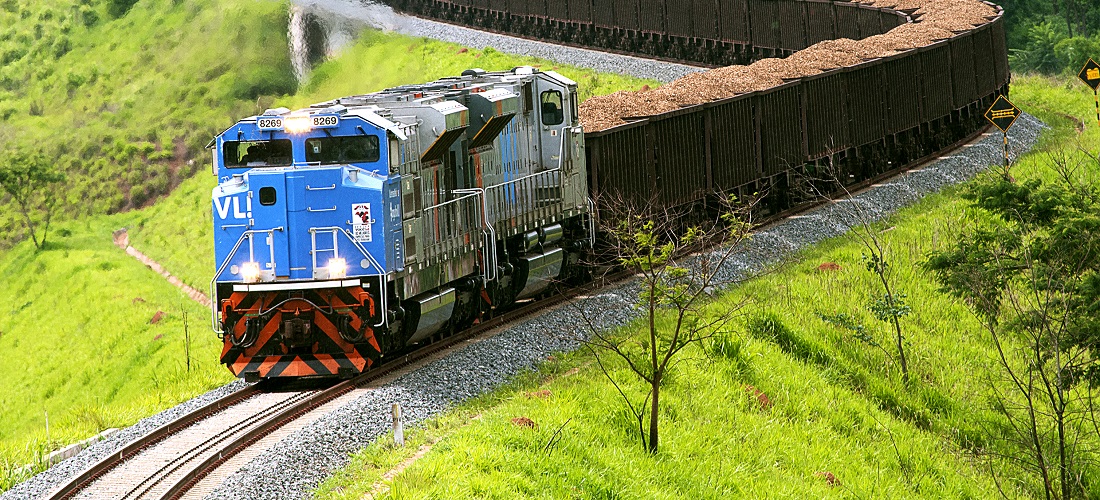
Unprecedented Report Finds Railway Infrastructure Prioritizes Commodity Exports Over Domestic Supply
Mar, 26, 2025 Posted by Gabriel MalheirosWeek 202513
Investment in transportation infrastructure is essential for a country’s economic growth. Freight transport is the backbone of corporate logistics systems, accounting for an average of 64% of total logistics costs. However, Ruling 2000/2024 – TCU – Plenary highlights that Brazil invests less than half of what other middle-income countries allocate to transport infrastructure. The result of this underinvestment is evident in the high costs faced by businesses moving cargo within the country.
Studies show that logistics expenses in Brazil are nearly twice as high as in developed nations. In 2022, logistics costs accounted for 13% of Brazil’s GDP, totaling an estimated BRL 1.3 trillion. A study commissioned by the National Confederation of Industry (CNI 2022) found that, on average, freight costs make up 15% of a product’s final price for the industrial sector.
While domestic freight transport remains expensive, straining the national economy and consumers, export logistics appear to be prioritized in government planning. The TCU ruling revealed that most available data on rail transport focuses on export operations, exposing a logistics system designed to favor the shipment of commodities while neglecting domestic cargo flows.
“Domestic cargo accounts for two-thirds (67%) of all freight transported in Brazil. It’s striking to realize that nearly all discussions, policies, and available data on transportation revolve around export corridors,” said Kauê Lunard Kawashita, a Federal External Control Auditor at the Federal Court of Accounts (TCU).
These and other findings from Ruling 2000/2024 – TCU – Plenary were the focal point of discussions at the “Domestic Freight Market Workshop,” held last Thursday (20) at the TCU headquarters in Brasília. Keyla Araújo Boaventura, head of the TCU’s External Infrastructure Control Secretariat, emphasized that the report consolidated data and studies from various industry stakeholders, exposing logistical bottlenecks that hinder Brazil’s global competitiveness.
The workshop brought together transportation experts, government representatives, and researchers. Among the speakers, André Ferreira, Executive Director of the Institute for Energy and Environment (IEMA), contributed to a panel discussing “Strategic Planning and the Coherence of Public Policies to Promote Rail Services for the Domestic Freight Market.”
The TCU report also highlights the underutilization of Brazil’s railway network. Findings indicate that more than half of the country’s rail infrastructure is either idle or operating at minimal capacity. Specifically, 36.3% of railways see no traffic at all, while 22.76% handle fewer than two trains per day. Only 12.66% of the network operates at high capacity.
Against this backdrop, road transport remains the dominant mode for domestic freight, leading to overburdened highways, an aging truck fleet, and poor road conditions. The report warns that replacing more suitable modes—such as rail—with road transport for certain types of cargo has serious consequences, including higher costs, increased fuel consumption, greater accident risks, higher emissions, and congestion on key highway corridors.
“The country’s main focus has been reducing export logistics costs, but that leaves the domestic market burdened with inefficiencies we fail to address,” said Maurício Ferreira Wanderley, Director of the TCU’s Specialized Audit Unit for Port and Railway Infrastructure.
Lack of Strategic Planning
The report underscores a fundamental gap in Brazil’s logistics planning: the lack of strategic guidelines and transparency. According to the document, there are no official studies identifying key bottlenecks or defining major logistics corridors.
This lack of structured data on domestic freight transport hinders the development of effective public policies for the sector. The absence of integrated logistics planning and enforcement mechanisms for best practices has stalled progress. The TCU report stresses the urgent need for regulatory measures backed by robust planning.
For André Ferreira, Executive Director of IEMA, addressing transportation planning deficiencies must be a priority in the National Logistics Plan 2050 (PNL 2050). “We need to institutionalize the decision-making process,” he said. The first step is to map future cargo flows to anticipate logistics challenges and infrastructure constraints. From there, clear criteria should be established to prioritize bottlenecks and identify the best solutions. Then, projects with the greatest impact on national development should be selected.
“Right now, that doesn’t happen. Infrastructure projects are approved without ensuring they are the best alternatives. Investment portfolios are defined without considering intermodal logistics corridors,” Ferreira explained. He stressed that investments must be guided by technical criteria, factoring in not only economic potential but also social and environmental impacts, with stakeholder participation.
The TCU report concludes that without urgent corrective measures, Brazil will continue to face logistical inefficiencies that hinder both economic growth and environmental sustainability. The Court recommends that the findings of Ruling 2000/2024 serve as a foundation for structural changes, including clearer guidelines, greater data transparency, and stronger governance in the country’s rail infrastructure.
Source: Noticias Agrícolas
-
Ports and Terminals
Mar, 30, 2020
0
Port of Paranaguá makes first shipment of bagged cornmeal
-
Meat
Apr, 27, 2020
0
Brazil beef exports to US rise on back of Covid-19 meatpacker closures
-
Other Logistics
Jul, 25, 2024
0
Port of Santos on alert after inspectors announce nationwide strike
-
Fruit
Jul, 16, 2020
0
Brazilian orange juice exports grow 17% YoY in 2019/2020 harvest

